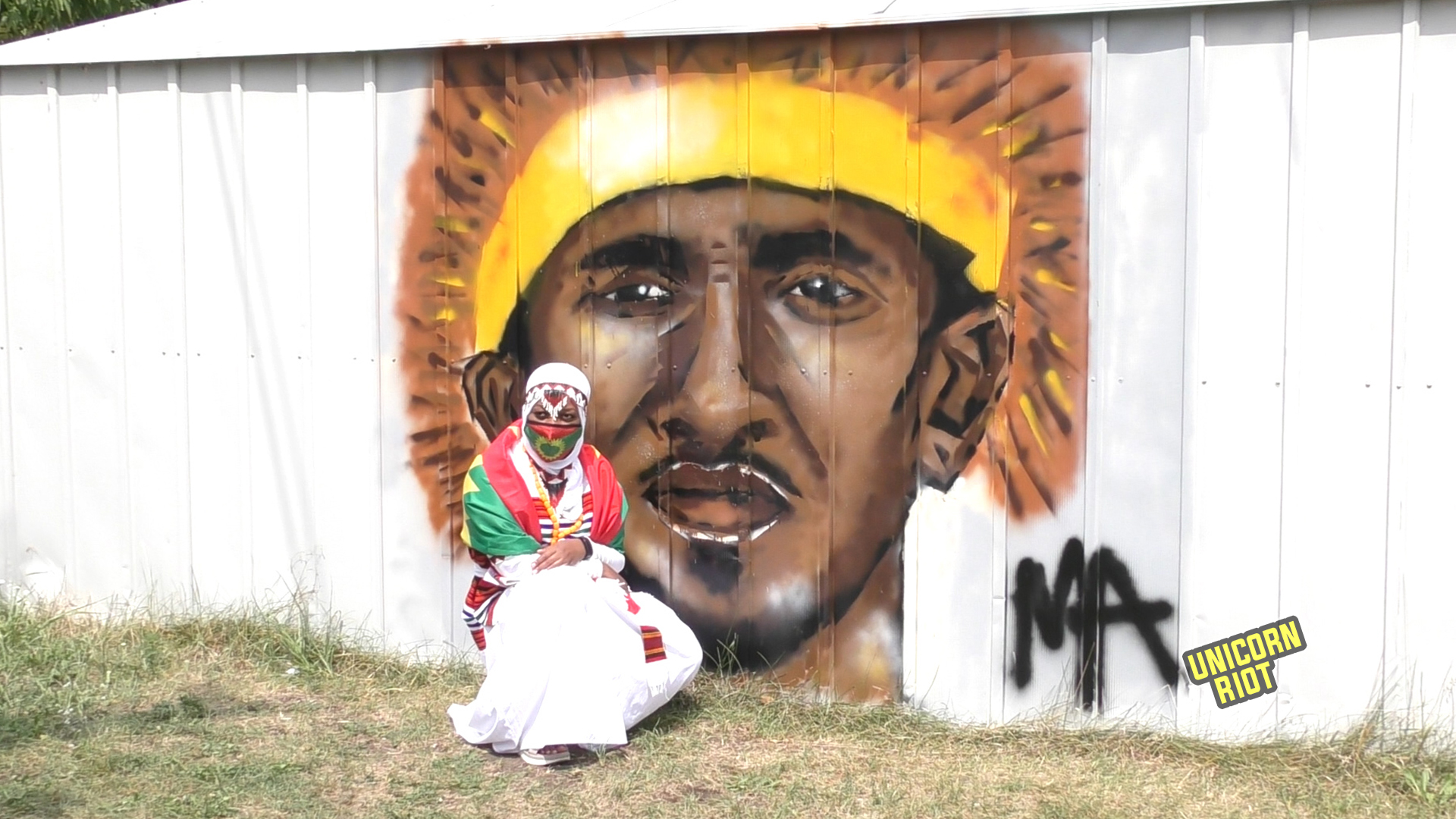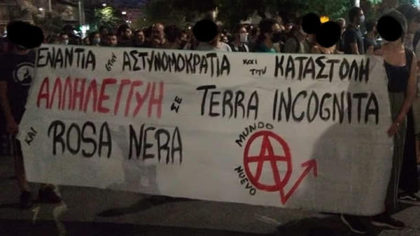Youth Lead Summer of Oromo Protests in Minnesota
Saint Paul, MN – On June 29, famed Oromo singer and activist Hachalu Hundessa was assassinated in Addis Ababa, Ethiopia, sparking renewed rounds of protests by Oromo people across the world.
Hundreds have been killed protesting in Ethiopia since Hachalu’s murder, with upwards of 10,000 arrested in a government crackdown that included a three-week Internet shutdown.
While Oromo people make up Ethiopia’s largest ethnic group, with over 36 million people, they’ve struggled for land rights and human rights for centuries.
The Oromo population in Minnesota is upwards of 40,000 people and has been a hotspot for recent #OromoProtests.
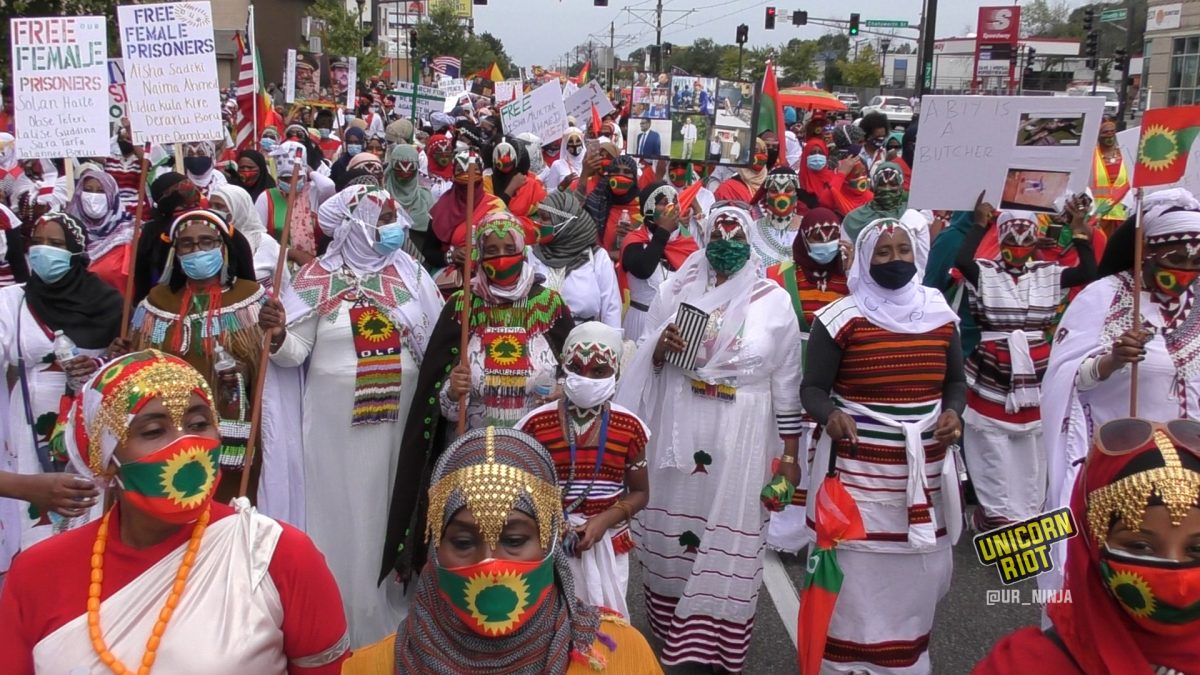
Dozens of demonstrations have occurred this summer in the Twin Cities metro area, including: car caravans and protests on the interstate; religious actions; women’s marches; hunger strikes; a 48-hour protest at the state capitol; and an ongoing occupation outside the new Ethiopian Consulate General office in St. Paul.
In August, Unicorn Riot reported from several Oromo protests—you can find the live streams below. During our coverage, we heard the opinions of many Oromo people, from youths to elders.
We listened for hours before and after the demonstrations. We heard of forced assimilation, of cycles of generational trauma and horror stories going from past generations leading up to newly arrived refugees who escaped persecution, torture, and possible death.
We also heard from Ethiopians who said they were against the protests, which they view as furthering an already-existing tension amongst ethnic groups in Ethiopia.
The following report links to some of the Oromo protests Unicorn Riot covered in Saint Paul during the summer of 2020 and attempts to contextualize some of the reasons behind them and this East African conflict.
Oromo Protests in Saint Paul–Minneapolis
Similar to the ‘qeerroo/qarree’ (youth) uprising that has occurred this summer in Ethiopia, Oromo youth in the Twin Cities are the driving force behind a movement demanding human rights for the Oromo people and justice for Hachalu.
In Saint Paul, Oromo youths with Qeerroo Minnesota have occupied an area outside of the Ethiopian Consulate on University Avenue since August 6. Their planned sit-in turned into an occupation of the property after workers in the consulate refused to meet with them.
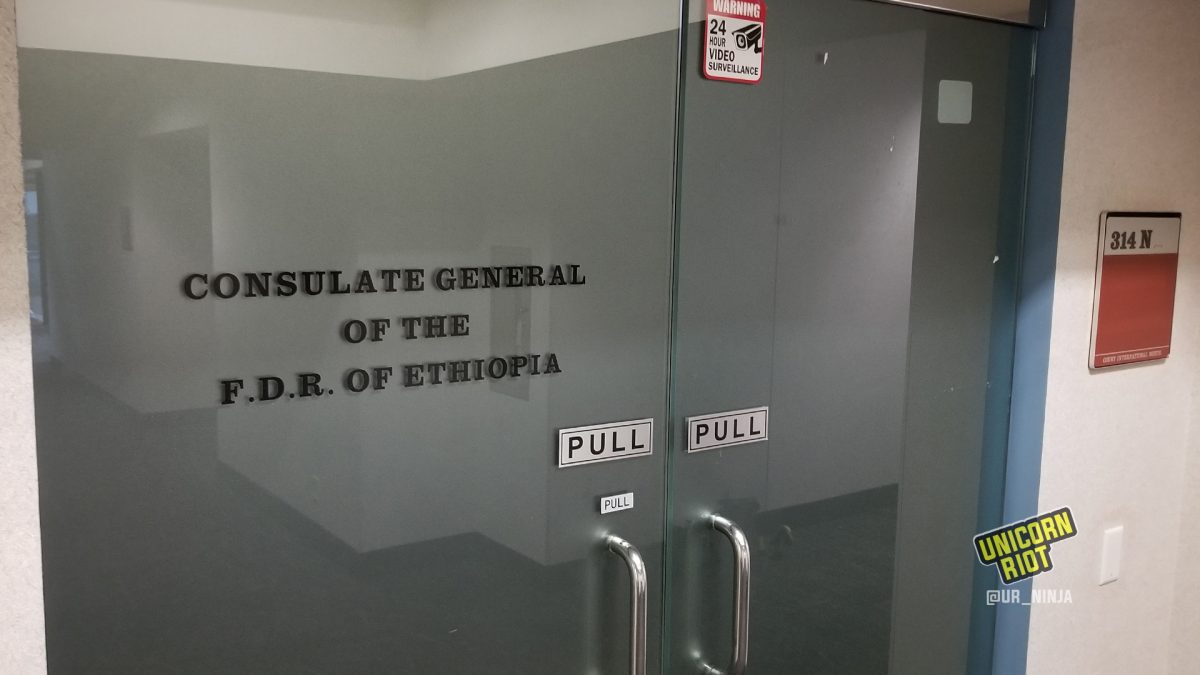
The qeerroo staged the occupation seeking to speak with the consulate, draw attention to what they deem human rights violations against the Oromo people, have an ongoing vigil space for Hachalu Hundessa, and to protest the government crackdown and detention of opposition leaders such as Jawar Mohammed and Bekele Gerba.
As the qeerroo and qarree set up their occupation on August 6, we streamed live from the steps of the building that houses the consulate. Oromo flags were flown and a large sign reading “Abiy Must Go,” referring to Prime Minister Ahmed Abiy, was placed in sight of the busy University Avenue.
Abiy is Ethiopia’s first Oromo prime minister. Though he was awarded the Nobel Peace Prize in 2019 for his efforts in brokering peace between Eritrea and Ethiopia, members of the Oromo diaspora are split when it comes to backing Abiy.
A constant demand during the Oromo protests is that Abiy and his administration resign and he be stripped of his Peace Prize due to his human rights violations.
Unicorn Riot heard from Qeerroo Minnesota organizers at the start of their occupation outside the Ethiopian Embassy in Saint Paul:
One protester at the occupation emphasized that although the number of protesters that day in St. Paul was small, their worldwide energy was apparent.
Members of younger generations of the Oromo Diaspora have been rallying across the earth to demand an end to human rights violations in their homeland. Protests and occupations have taken place outside of Ethiopian embassies throughout Europe, including the embassy in Berlin, Germany:
“There’s a lot of protests going on, and I feel like this generation, our generation, will end it, you know?” — protester at sit-in outside Ethiopian consulate in St. Paul, August 6, 2020
Although the qeerroo in Minnesota said they’re demanding justice for the Oromo people, they were there “for humans in general. There’s a lot of human rights violations going on in this world.“
“We’re here for people in Kashmir; we’re here for Palestine; we’re here for #BlackLivesMatter; we’re here for the Uyghur Muslims who are suffering at the hands of the Chinese government. We’re here for all humans. But our people, Oromo people, they’ve have been suffering for so long. And it’s the government that’s been hurting our people—it’s systematic oppression.“
While the consulate is supposed to act as a conduit of access for Ethiopians in Minnesota to Ethiopian government officials, the youths said that the consulate was nowhere to be found after Hachalu’s assassination—hence the occupation at the embassy to demand a meeting.
The internet was turned off earlier this summer as turmoil, unrest, and violence swept areas of the Oromia region, making communication challenging for those in America with loved ones back home. People were not able to speak with ambassadors, and could only attempt to contact their family and friends through landlines.
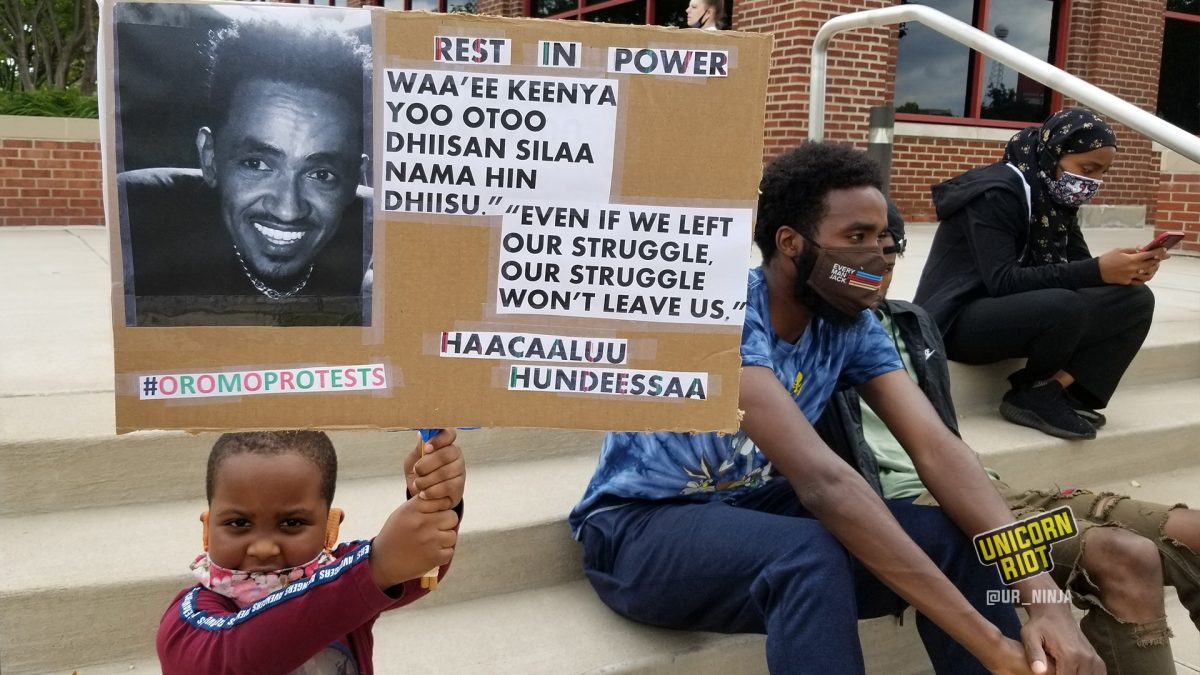
After nearly a month of camping outside the consulate, one of the youths’ demands was met—a video meeting with the consulate. A Qeerroo Minnesota organizer told Unicorn Riot that although during the meeting the ambassadors “pretty much avoided all questions” youths were able to share their thoughts and demand the consulate make a public statement.
Many Oromo Minnesotans have family members who’ve been affected by the happenings in Ethiopia. On August 7, women organized a large march in protest of the repressive policies in Ethiopia and demanding freedom for political prisoners, and that the U.S. stop funding the Ethiopian government. Participants marched to Governor Walz’ residence from the Oromo Community Center in St. Paul.
Since 2016, total U.S aid to Ethiopia has averaged around $1B a year. Last month, disagreements over the controversial Grand Ethiopian Renaissance Dam on the Nile River led to about $130 billion of U.S. aid to Ethiopia being cut by U.S. Secretary of State Mike Pompeo.
During the women’s march in Saint Paul, one participant explained, “People are out here because there’s a huge government crackdown going on in Ethiopia. We also have minority groups that have been attacked.” The Ethiopian government, she said, is scapegoating protesters for the violence rather than investigating the hundreds of deaths that have occurred.
Watch our stream from the women’s march on August 7, 2020:
This journey for change has also steered its way onto Twin Cities highways. In one of the roadway takeovers, on August 12 (see below), dozens of vehicles crawled slowly along I-94 West in Saint Paul, stalling traffic during rush hour.
After portions of the caravan exited the interstate in Minneapolis that day, a few vehicles were pulled over by Minnesota State Troopers and given traffic citations.
During a late-night visit to the occupation outside of the Ethiopian Consulate on August 13, numerous qeerroo shared their perspectives with Unicorn Riot during a nearly two-hour long live stream (see below).
Many of the youth compared aspects of the movement for Oromo liberation to the movement for Black lives in the United States.
Asked about reports of buildings being burned down in the Oromia region of Ethiopia, one man used the example of the property set aflame in the George Floyd protests, saying:
“Oromo people are not just burning anything down. We’re trying to be heard. We’ve tried the peaceful protest. BLM has tried the peaceful protests, and nothing has been changed from that.” — Qeerroo organizer in Minnesota
After meeting with members of the consulate, organizers with Qeerroo Minnesota are no longer sleeping outside the building, but are still holding space in front of the embassy during business hours to continue to demand a public statement and to protest.
Assassination of Hachalu Hundessa
Imprisoned in Ethiopia at age 17 for political activities, Hachalu Hundessa released his first album in 2009, one year after his five-year sentence had ended.
Hundessa became increasingly popular as his songs about the struggles of the Oromo people struck a chord with the public. On June 22, 2020, a week before his murder Hundessa commented on the repression of Oromos during an interview on Oromo Media Network (OMN). After this he received intense criticism and threats on social media, which many say directly led to his death.
Hundessa was shot to death on June 29, 2020 in a suburb of Ethiopia’s capital city, Addis Ababa. The government claims members of the Oromo Liberation Front (OLF) perpetrated the assassination; the OLF has denied responsibility.
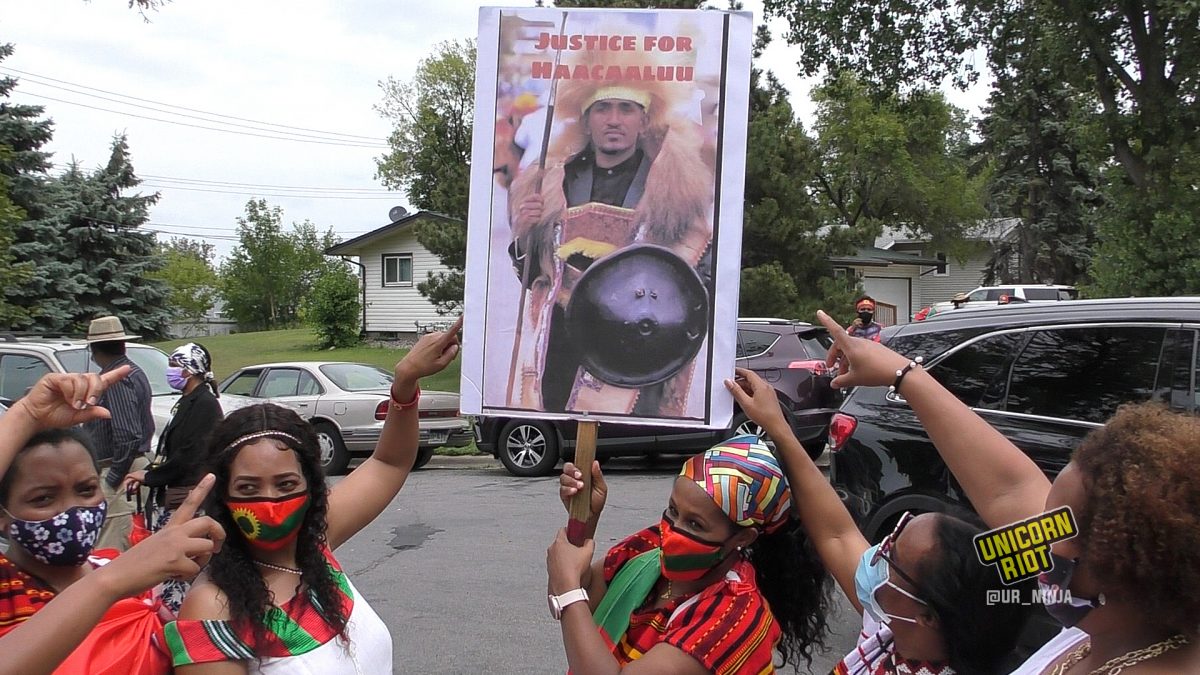
Immediately after Hachalu’s murder, the Ethiopian government shut down the internet and arrested about 50 top-level government officials. Mass protests erupted. Buildings across dozens of districts were set ablaze and entire regions were wrought with intercommunal violence.
At least 5,000 people, mostly Oromo, were rounded up in the following days. Filling the jails, many more were locked up in the subsequent weeks, leading the government to set up makeshift jails in school buildings.
Hundreds of imprisoned people crowded together in close quarters during the COVID-19 pandemic has predictably led to more outbreaks of the virus. Community members at the Oromo Community Center of Minnesota allege that government forces have sent inmates who tested positive for coronavirus to jails with no infections in a deliberate attempt to spread the disease among Oromo protesters.
Oromia Media Network and Jawar Mohammed
Oromo Media Network, a nonprofit news organization headquartered in Minnesota, was created in part by a prominent leader of the 2016 Oromo protests and the ‘Qeerroo’ movement, Jawar Mohammed.
Educated at Stanford and Columbia University, 34-year-old Mohammed recently lived in Minnesota for some years before returning to Ethiopia in 2018 after Abiy became Prime Minister and lifted bans on opposition groups. Jawar stepped down from his role at OMN after setting up a branch in Addis Ababa, and joined the Oromo Federalist Congress to run for office in Ethiopia.
On June 30, Jawar Mohammed was arrested after a disagreement with the government over the location of Hachalu Hundessa’s burial site. Members of his family were also arrested, along with political leader Bekela Gerba and others. Many of these political prisoners are still locked up.
OMN continues to operate, playing a vital role in broadcasting information to the Oromo Diaspora and consistently posting to social media. On September 4, OMN interviewed Minnesota-based human rights advocate Najat Hamza about recent occurrences in Oromia and through the diaspora.
There is a notable lack of free press in Ethiopia. An interviewee during the women’s march explained to Unicorn Riot that the Ethiopian courts work with the government, and that lawyers don’t have “any right to advocate for the people.“
Itichaa Guddataa, a journalist formerly with OMN and now with Oromo Diaspora Media, said that ‘”there is no press freedom” and that journalists, bloggers, radio hosts, and others are locked up simply for reporting on Oromo news.
Since Jawar Mohammed’s arrest, OMN employees based in Addis Ababa have been detained by the Ethiopian federal government on suspicion of “operation of illegal communication equipment.” Several other journalists have also been recently arrested or detained.
Outside the embassy in Saint Paul, OMN has interviewed the protesters at the occupation a few times, including during an occupation eviction scare.
As of this article’s publication, Jawar Mohammed is still incarcerated, along with a litany of other political prisoners.
In late August, two Minnesota politicians wrote a letter to Ambassador Nagy, the American ambassador to Ethiopia, condemning Ethiopia’s detention of Jawar Mohammed and Mishi Chiri. Misha also works with OMN and came to Ethiopia from Minnesota in 2018 with Jawar.
The politicians urged the State Department to take every appropriate action “to ensure that they [Jawar and Mishi] are treated humanely and assist them in protecting and exercising their full legal rights.“
A week before the letter for Jawar and Mishi, 20 members of Congress, led by Congressman Dean Philips (D-MN), wrote to Secretary of State Mike Pompeo urging the U.S. administration to work with Ethiopia to ensure dialogue and political opposition to Prime Minister Abiy and among other demands, an independent investigation into Hundessa’s killing.
Oromia and Ethiopia
Oromia is a region in Ethiopia, the second-most-populated country on the African continent. The Oromo people are indigenous to east and northeastern Africa and historic regions of Oromia spread beyond Ethiopia into Somalia and Kenya.
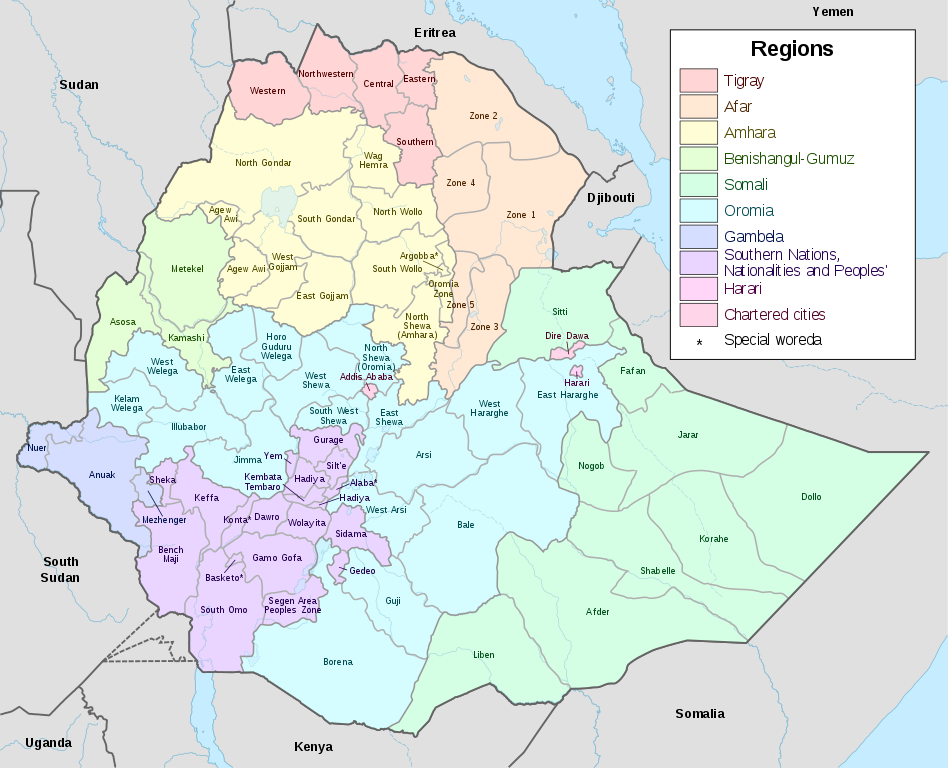
Ethiopia is the home of over 80 ethnic groups and multiple religions and languages. At about one-third of Ethiopia’s population, Oromo people make up the largest ethnic group in the country.
Historically rooted as one of the first Christian states in the world, over 60% of those living in Ethiopia are Christian, with another third of the population practicing Islam. Judiasm, Baháʼí, and traditional indigenous beliefs such as Waaqeffannaa are also practiced, among others.
The Oromo language is the most-spoken language in Ethiopia, yet Oromo is not recognized as an official federal language in the country.
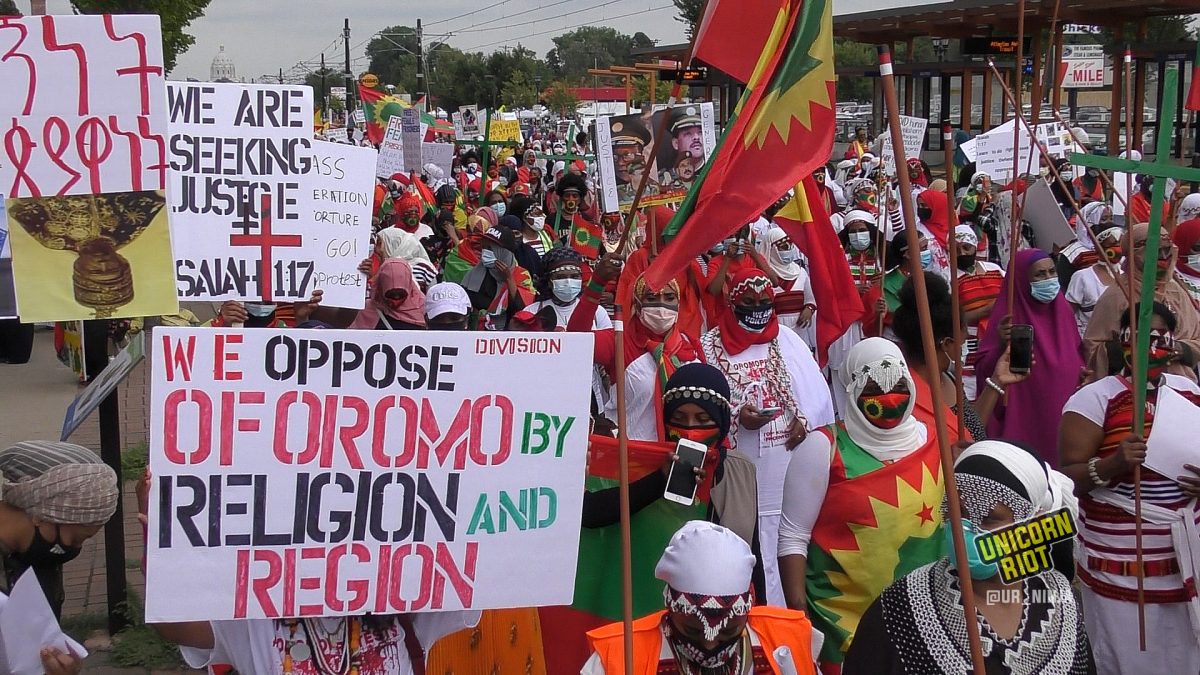
While in the last 150 years Ethiopia has been celebrated for resisting white supremacist colonization, the country has continued to suffer through ethnic violence. Abyssinian rule in the 19th and 20th centuries laid out a continuing regime of systematic oppression against groups like the Oromo.
Oromo people are faced with forced assimilation in their homeland and an erasure of their history. Oromo have been branded by Abyssinians as outsiders and called the derogatory term ‘galla’, meaning ‘savage’, ‘slave’, or ‘enemy’.
Oromo youth outside the consulate in Saint Paul compared the Oromo people’s forced assimilation through religion, language, and cultural conversion to the genocide enacted on Indigenous North American populations by the United States.
Statutes of Emperor Menelik II have been targeted in Ethiopia, in a worldwide wave of colonialist statutes being toppled. In London, a bust of Haile Selassie and his father were both destroyed during the 2020 protests.
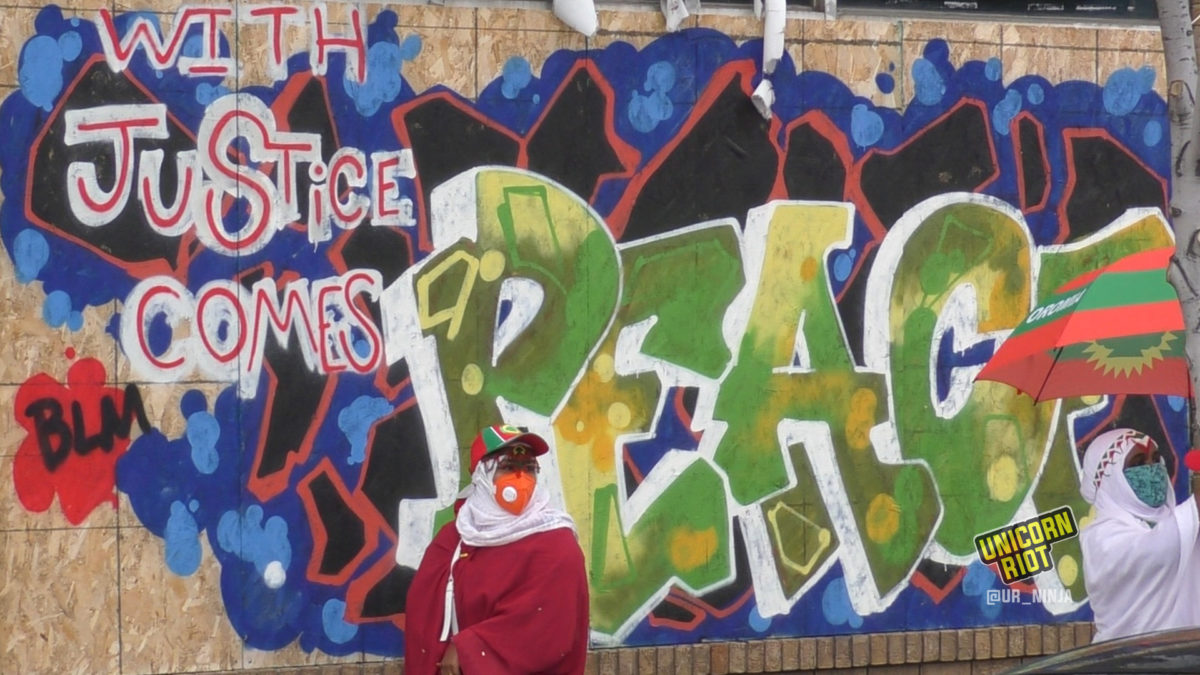
Marginalization of Oromo-based political movements from national politics has continued into the 2000s. Massacres of Oromo and political activists have been perpetrated by the Ethiopian government numerous times in the last 20 years, including killings of hundreds in 2005 and 2015.
In 2016, mass Oromo protests were sparked from a government plan to take over Oromo land in and around the capital of Ethiopia, Addis Ababa. Hundreds were killed during the protests and thousands were jailed.
Two years later, protests helped pave the way for the resignation of Prime Minister Hailemariam Desalegn; this is when Abiy Ahmed was placed into power. Since then, the country has experienced “an increase in killings of people critical of the government and political personalities in the country“, according to Amnesty International.
As new information out of Ethiopia is slowly gleaned, Oromo protests following Hundessa’s killing earlier this summer are continuing to happen in Oromia and across the world.
Continue to follow Unicorn Riot for further specials on the Oromo protests in Minnesota.
Georgia Fort contributed to this report.
Follow us on X (aka Twitter), Facebook, YouTube, Vimeo, Instagram, Mastodon, Threads, BlueSky and Patreon.
Please consider a tax-deductible donation to help sustain our horizontally-organized, non-profit media organization:

